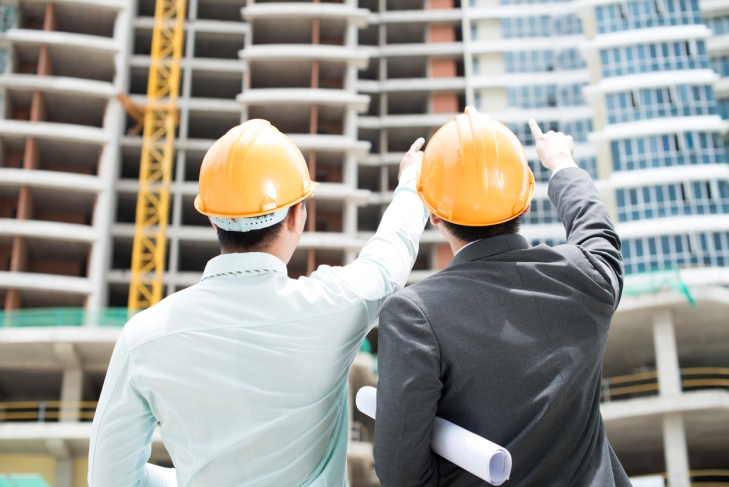
By focusing on recycling capital and re-seeding its portfolio, Singapore’s Mapletree Investments have moved beyond the island and into the global market
When Singaporean real estate company Mapletree Investments started operations in 2000, it was a fledgling S$2.3 billion-company holding non-port properties that had been transferred from Singapore’s port authority. At the end of the 2021/22 financial year, its assets under management (AUM) figure were approaching S$80 billion and revenue were over S$2 billion.
Mapletree’s Group Chief Executive Officer Hiew Yoon Khong explains the four main parts of the business:
- Developer: Buying land, designing and building;
- Investor: Identify/underwrite opportunistic ventures;
- Property Manager: Providing building management to tenants in Mapletree-owned properties;
- Capital Manager: Syndicate, grow and manage third-party assets under management
“We manage assets on behalf of third parties in return we get a fee income,” says Hiew, referring to capital management. “This is the first preference for building the pipeline for our REITs, or we put the portfolio together and syndicate it as a private fund. The objective is to drive the fee.
“Sometimes, we develop assets or acquire assets that may not be suitable for either the REITS or private funds, in which case we dispose of it to a third party for capital gains. This recycles capital. This is a continuous process that we do.”
He elaborates on the recycling strategy: “If we don’t have the capability to execute the capital management platform and bring in third party capital, all the capital committed in terms of growing the portfolio will basically weigh down our balance sheet. Our gearing would be excessive, and we would not be able to move the business forward.
“This theme about recycling the capital and identifying the portfolio suitable for syndication is consistent in how we execute our recycling strategy.”
KPIs for growth
Speaking at a Mapletree Leadership Series lecture titled “How to grow a Mapletree”, Hiew spoke of the importance of continually repositioning to achieve both resilience and growth. Mapletree’s recent performance has been buoyed by demand for logistics and data centres during the pandemic, with such assets accounting for 43 percent of AUM.
The CEO also highlighted the Key Performance Indicators (KPIs) by which the company measures its performance in its five-year plans, the first of which ran from FY 08/09 to FY 13/14. The main focus is on “Returns”, specifically Returns on Invested Equity (ROIE) and Returns on Equity (ROE).
“ROIE is a cash-on-cash measurement,” he explains. “How much cash you put into the business on an annual basis, and how much you take out of the business. ROE is more of an accounting measurement.
“It’s important for us to separate these two because the accounting standard takes valuation into the P&L, but valuation is not a cash item. It’s simply a valuer telling us what a building that we own is worth, let’s say it was $100m last year and now it’s $110m, therefore it represents a $10m profit. But we can only count that $110m valuation when we dispose of the asset, in which case it goes into the ROIE.
“We watch these two numbers carefully. You can have a situation where, based on rising valuations, your accounting statements show increasing profits, but it could be lacking in cash. Your idea that you can continuously grow the business based on that impression could be mistaken. That is why we pay lots of attention to ROIE.”
Based on that, it would be intuitive to imagine a high ROIE figure as a standard objective. In Mapletree’s five-year plans, there is an upper limit applied to desired ROIE. Why is that?
“If your ROIE is extremely high compared to ROE, it basically means you are selling assets very quickly, perhaps faster than you are re-seeding your portfolio,” notes Hiew. “This was confirmed by our final results at the end of our first five-year plan, which was 14.1percent ROIE, and our NAV CAGR (Net Asset Value Compound Annual Growth Rate) was 11.4 percent, below our first 5-year plan minimum of 12 percent.
“When we analysed why we ended with these figures, we found that we over-harvested our portfolio. We were getting a lot of cash back from selling our assets but we were not converting some of that cash into recurring income.”
Future growth
Mapletree also tracks other KPIs such as Average recurring PATMI (Profit After Tax and Minority Interests), which is essentially rental income net of all the costs. Another KPI is AUM ratio, which is the ratio of third-party assets managed by Mapletree for a fee versus assets it owns, for which there is no fee. “If you think about that as a ratio, the higher the ratio, the more efficient our capital management model is,” notes Hiew.
While data and logistics centres have delivered profits in recent years, Hiew believes the next wave of growth lies in education.
“The next big sector that we are focusing on is student housing,” says Hiew. “We have so far committed $6 billion, which could reach $20-30 billion over the next five years. We are active in the UK but we have a small market share, so we can scale up there. We have no presence in Australia. We have a little asset in Canada. In Europe, there are opportunities in Germany, Spain, Switzerland etc. but it’s a little trickier in some countries because of regulations.”
Hiew Yoon Khong was the speaker at the Mapletree Leadership Series lecture “How to grow a Mapletree” that was held on 10 March 2022.
Follow us on Twitter (@sgsmuperspectiv) or like us on Facebook (https://www.facebook.com/PerspectivesAtSMU)
Last updated on 31 May 2022 .

